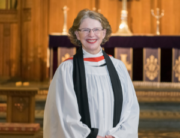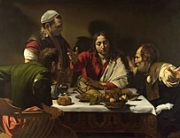A sermon given during the 10:30am Choral Eucharist, by The Rev’d Dr Lynn Arnold AO, on the 31st December 2023.
LORD KEEP MY MEMORY GREEN
May the words of my mouth and the meditations of our hearts be worthy in your sight, O Lord, our Rock and our Redeemer. Amen.
I hope that Christmas was a time of joy and blessing for you and your loved ones. If you have been on the twelve day Christmas shopping spree for your true love, then, on this seventh day, according to Henry Ergas’ costing in The Australian on 22 December, you will need $63,000 to purchase seven swans aswimming; more importantly, and I don’t want to sound like a Christmas grinch, you should also have arranged a Class 3 permit from the Department for the Environment & Water to have one swan in captivity, swimming or otherwise, let alone seven.
In the fourth year of her long reign, Queen Victoria wrote in her diary on Christmas Eve 1841:[1]
Christmas, I always look upon as a most dear happy time … It is a pleasure to have this blessed festival associated with one’s happiest days. The very smell of Christmas trees of pleasant memories.
It has been noted that it was Queen Victoria and Prince Albert who led to the popularising of the Christmas Tree tradition in Great Britain. Indeed, it would be during her reign that Christmas would achieve new heights of celebration. However, as Henry Ergas noted in that same article, there would be a significant change in what Christmas came to mean in the Victorian era. Ergas wrote:[2]
Propelled by protestant evangelism and rising affluence, Christmas was transformed into a private, intensely sentimental affair, centred on childhood innocence.
Henry Ergas’ contention in the article being that there had been an experience through many centuries, since Christianity originally transformed the mid-winter Roman Saturnalia into Natal festivities, that were based upon ‘wonder in a world turned upside down and (with) exchanges between unequals in the community.’ That transformation had included the key Christian value of love of neighbour in the universal sense, and of a call for charity for those in need.
Less than three years after Queen Victoria’s diary entry, Charles Dickens published his short story A Christmas Carol. This short work very quickly entered deeply into the consciousness of our Christmas culture. It has been retold innumerable times, including on the silver screen in many versions. The key story of every retelling being the dreadful bringing of the anti-hero of the story, Ebenezer Scrooge, to a personal epiphany where his ‘Christmas, bah humbug’ philosophy became his awed declamation:[3]
I will honour Christmas in my heart, and try to keep it all the year. I will live in the Past, the Present, and the Future. The Spirits of all three shall strive within me. I will not shut out the lessons that they teach.
Dicken’s story was much more than a parable of personal transformation, he wrote the work to have society radically rethink what it should mean to be human; he did so by means of what he labelled a Christmas carol, but the import was clearly intended to be much more than just for festive seasons’ of goodwill but, as Scrooge finally said: ‘honour Christmas … and try to keep it all the year.’
We know that Dickens meant his story to be much wider in its canvas than just the season of Advent by virtue of what had inspired him to write the story. Many months earlier, in the spring of 1843, Dickens had read a then recently released government report on child labour in the United Kingdom. John Broich, in an article in Time magazine, has noted that Dickens wrote to the authors of the report saying he was ‘stricken’ by its findings.[4] The general findings of the report were powerful enough, but it was perhaps the individual voices of some of the children interviewed by the commission which may have had particular impact on Dickens. Listen to some of the voices of children recorded in the proceedings of the commission:[5]
Sarah Gooder, aged 8:
I’m a trapper in the Gawber pit. It does not tire me but I have to trap without a light and I’m scared. I go at 4 and sometimes at half past 3 in the morning, and come out at 5 and half past … sometimes I sing when I’ve light, but not in the dark; I dare not sing then, I don’t like being in the pit.
John Saville, aged 7:
I’m generally in the dark, and sit me down against the door … I never see daylight now, except on Sundays.
The idea that children in his own time should live in near constant darkness, obviously gnawed away at Dickens. It is doubtless the reason that, in his story, he forced Scrooge to come face to face with two pitiful children who personified the dark side of his world:[6]
This boy is ignorance. This girl is want. Beware them both, and all of their degree, but most of all beware this boy, for on his brow I see that written which is Doom, unless the writing be erased.
Dickens wanted an increasingly self-indulgent society to erase that dreadful writing where otherwise Ignorance and Want would lead to Doom. He wasn’t alone in this desire. There were others who were equally appalled at the report of the commission such as Elizabeth Barret Browning. Significantly, there was another who would in time become famous as a promoter of extreme social change – Friedrich Engels. The report’s impact was amongst the catalysts which led him into collaboration with Karl Marx in writing the Communist Manifesto. Such was his solution to the ills cited by the report, a solution which we know would ultimately prove itself bankrupt but only after an immense toll of human suffering.
Dickens took an opposite approach to the collectivist, socially engineered recipe of Engels and Marx, proposing instead the transformation of society by personal transformation of the hearts of each of us. No wonder he called it a Christmas Carol, for it was to be a song of hope, of redemption, of transcendence.
A Christmas Carol was in fact the first of five Christmas stories that Dickens would write between 1843 and 1848. Peter Ackroyd has described all of these stories as ‘striking ‘a sledgehammer blow’ for the poor, uneducated and repressed’.[7]
In the last of the series, The Haunted Man and the Ghost’s Bargain, published in 1848, there was a Faustian element where the main character, Redlaw, sought to be freed from the burden of remembrance. Granted that gift by the story’s ghost, it then dreadfully spread to others, only two people remaining immune – a street urchin and Milly Swidger, a mother who had lost one of her children. The true horror of that for which he had asked was explained by the phantom who, describing what type of human is ‘utterly bereft of … remembrances’, saying that:[8]
No softening memory of sorrow, wrong, or trouble enters here, because this wretched mortal … has been abandoned to a worse condition that the beasts, and has, within his knowledge, no one contrast, no humanising touch, to make a grain of such a memory spring up in his hardened breast. All within this desolate creature is barren wilderness …
The nub of the story was related by Milly Swidger, who posed a rhetorical question to which she then gave an answer:
May I tell you why it seems to me a good thing for us, to remember wrong that has been done to us? … That we may forgive it.
The humanising effect of remembrance was then linked by Dickens to the challenge of Christmas:
Christmas is a time in which, of all times in the year, the memory of every remediable sorrow, wrong, and trouble in the world around us, should be active with us …
Reflecting on this suggestion that Christmas should be a time not of ‘forgive and forget’ but of ‘remember, forgive and be forgiven’ reminded me of a common practice of many Jews in the High Festival season of Rosh Hashanah and Yom Kippur where believers feel it is incumbent upon them to remember wrongs they have done to others and then purposefully ask forgiveness.
For Dickens, it was important to have British society of the time remember what it had done to such children as Sarah and John and seek forgiveness; and then link that forgiveness to the spirit of Christmas. Such a sentiment echoes our reading from Isaiah this morning:
Arise, shine; for your light has come, and the glory of the Lord has risen upon you. For darkness shall cover the earth, and thick darkness the peoples; but the Lord will arise upon you, and his glory will appear over you. Nations shall come to your light, and kings to the brightness of your dawn. [Is 60:1-3]
Sarah and John had so simply and poignantly noted the darkness that dominated their lives. They gave their testimony 180 years ago, but the reality is that in our own time, such darkness figuratively benights the lives of so many in our midst. Has our expression of Christmas been a self-indulgent privatising of Christmas or have we sought to follow the words of Paul from his letter to the Ephesians in taking the opportunity of the season to spread:
The news of the boundless riches of Christ, and to make everyone see what is the plan of the mystery hidden for ages in God who created all things. [Eph 3:8b-9]
The three wise people from East brought gold, frankincense and myrrh [Matt. 2:11]; what gift do we bring to the manger? May we bring to the baby Jesus, our gift that our remembrances have been gilded by our forgiveness of wrongs done to us. May such a gift affirm our God-given humanity. And so, let me close, in this season of Christmastide, just over half-way to Epiphany by repeating the defining words of Redlaw’s own epiphany:
Lord keep my memory green.
And if we let our memory, through the power of Christ’s love and forgiveness, humanise us, then we may echo the defining words so well-known from Dickens’ first Christmas story, where ‘everyone’ meant what it simply said – ‘everyone’, not just those near and dear to us – by quoting Tiny Tim:
God bless us, everyone!
[1] Cited by W David O Taylor, Why putting Christ back in Christmas is not enough, in Christianity Today, 17 Dec 2018.
[2] H Ergas, After year of turmoil, hope and peace to all people of goodwill, in The Australian, 22 Dec 2023, p11
[3] C Dickens, A Christmas Carol, 1843, p135 www.gutenberg.org/cache/epub/24022/pg24022-images.html
[4] J Broich, The Real Reason Charles Dickens wrote a Christmas Carol, Time magazine, 13 Dec 2016.
[5] Cited in Extracts from the 1842 Royal Commission, www.ncm.org.uk/app/uploads/2023/02/Extracts-from-the-1842-Childrens-Employment-Commission.pdf
[6] C Dickens, A Christmas Carol, 1843 www.gutenberg.org/cache/epub/24022/pg24022-images.html
[7] P Ackroyd, Dickens, Harper Collins, 1990, p408, cited in www.charlesdickenspage.com/charles-dickens-christmas-books.htm
[8] Quotes from The Haunted Man and the Ghost’s Bargain, are from www.gutenberg.org/files/644/644-h/644-h.htm





